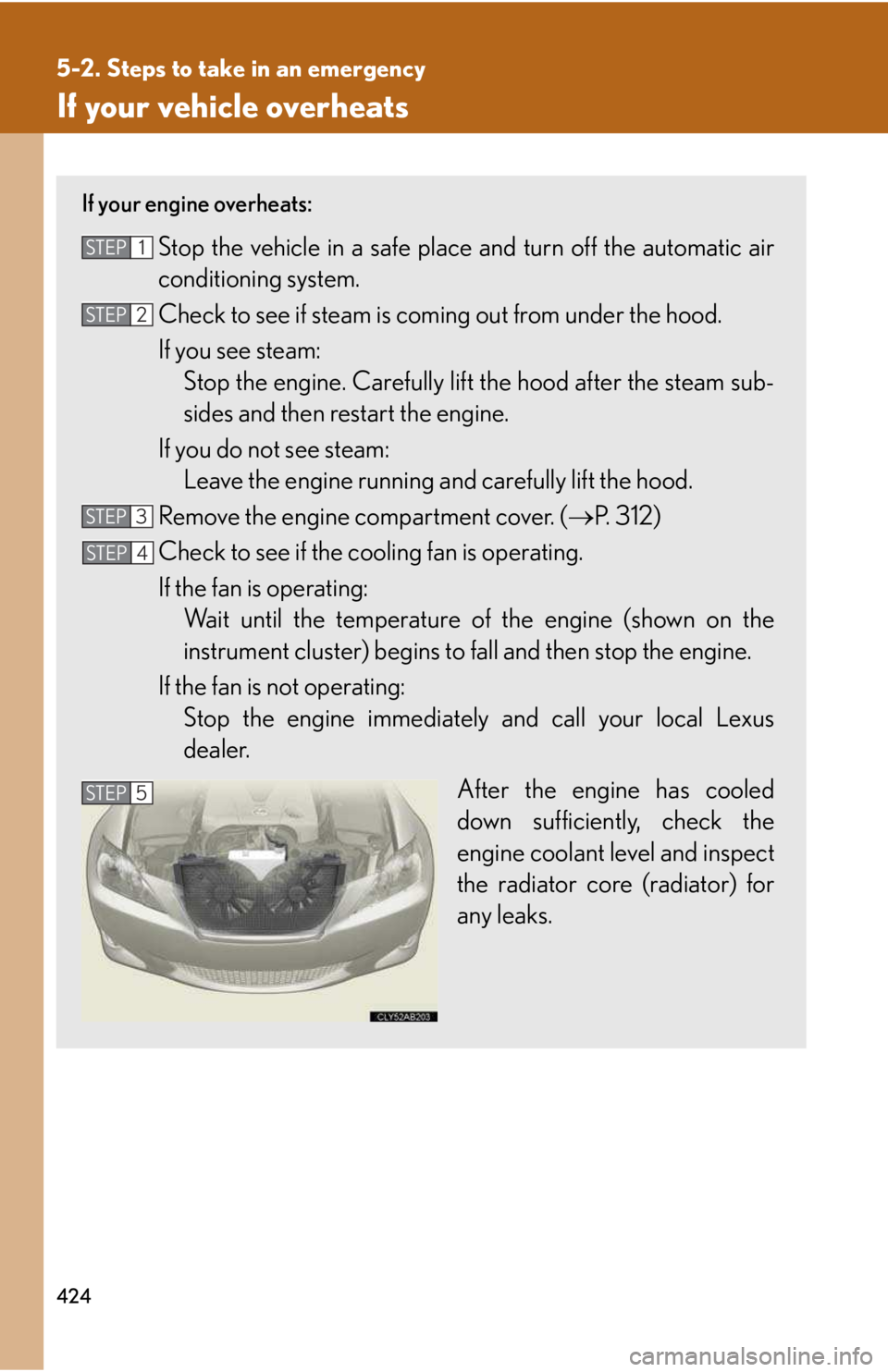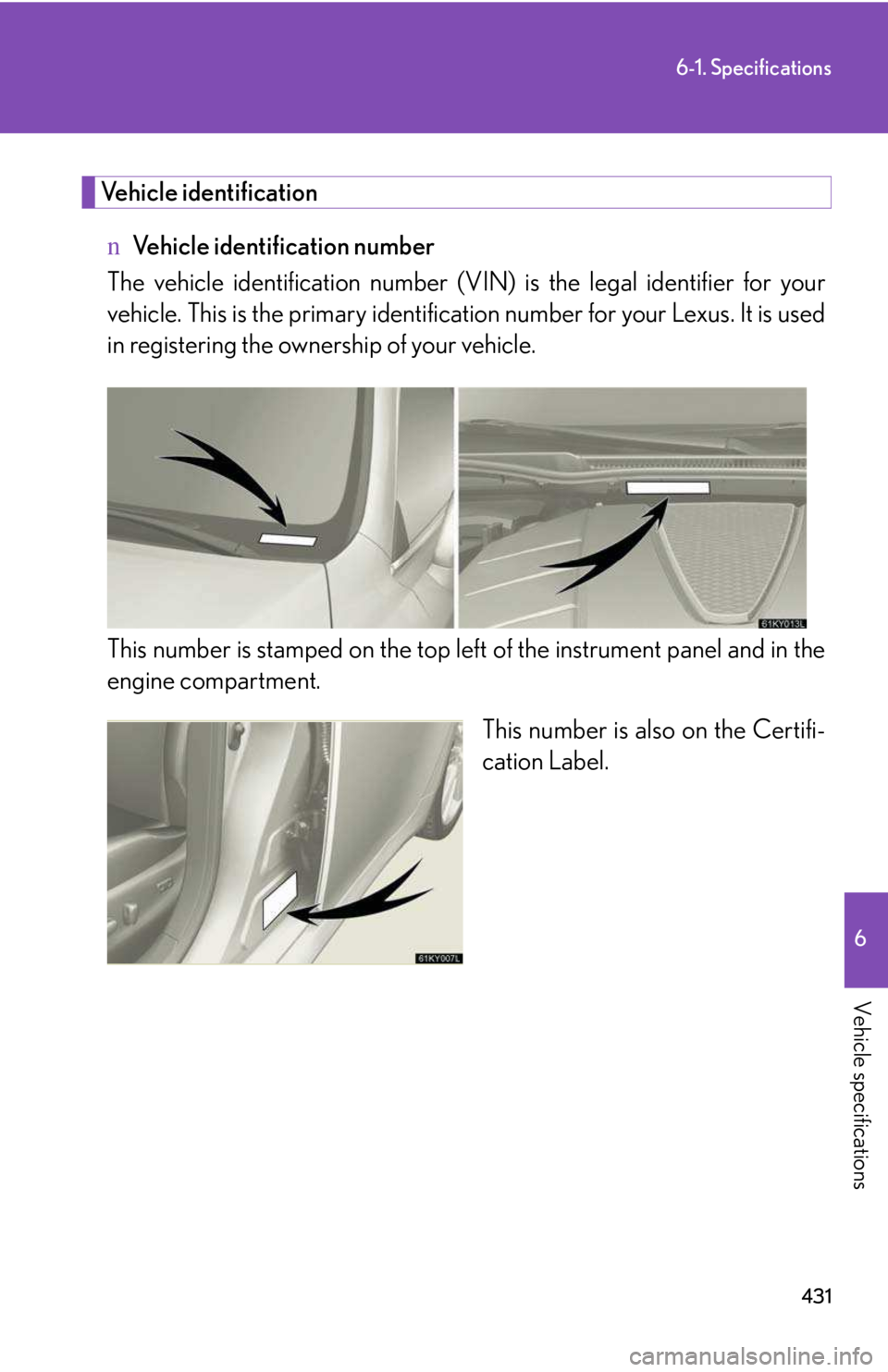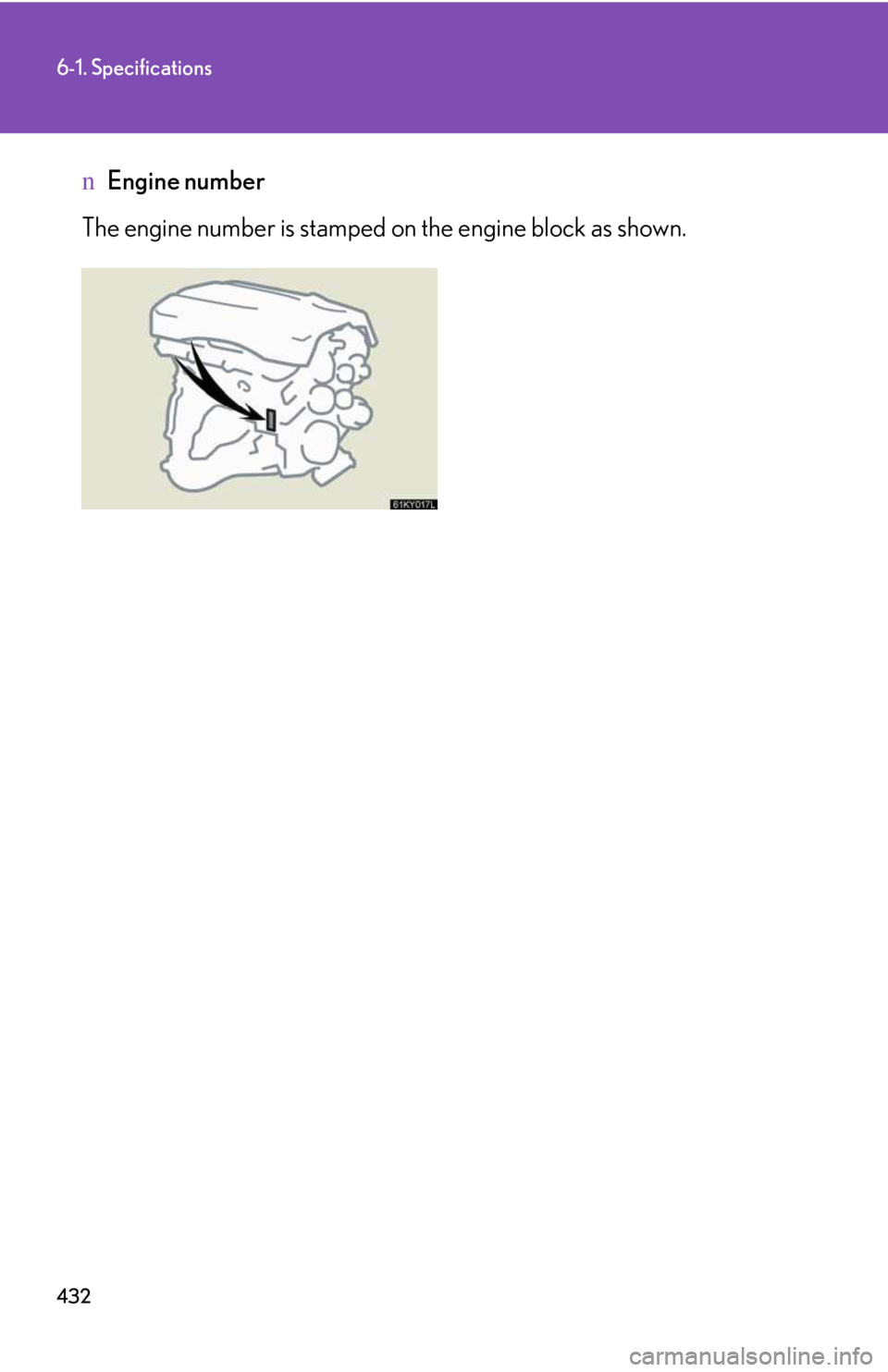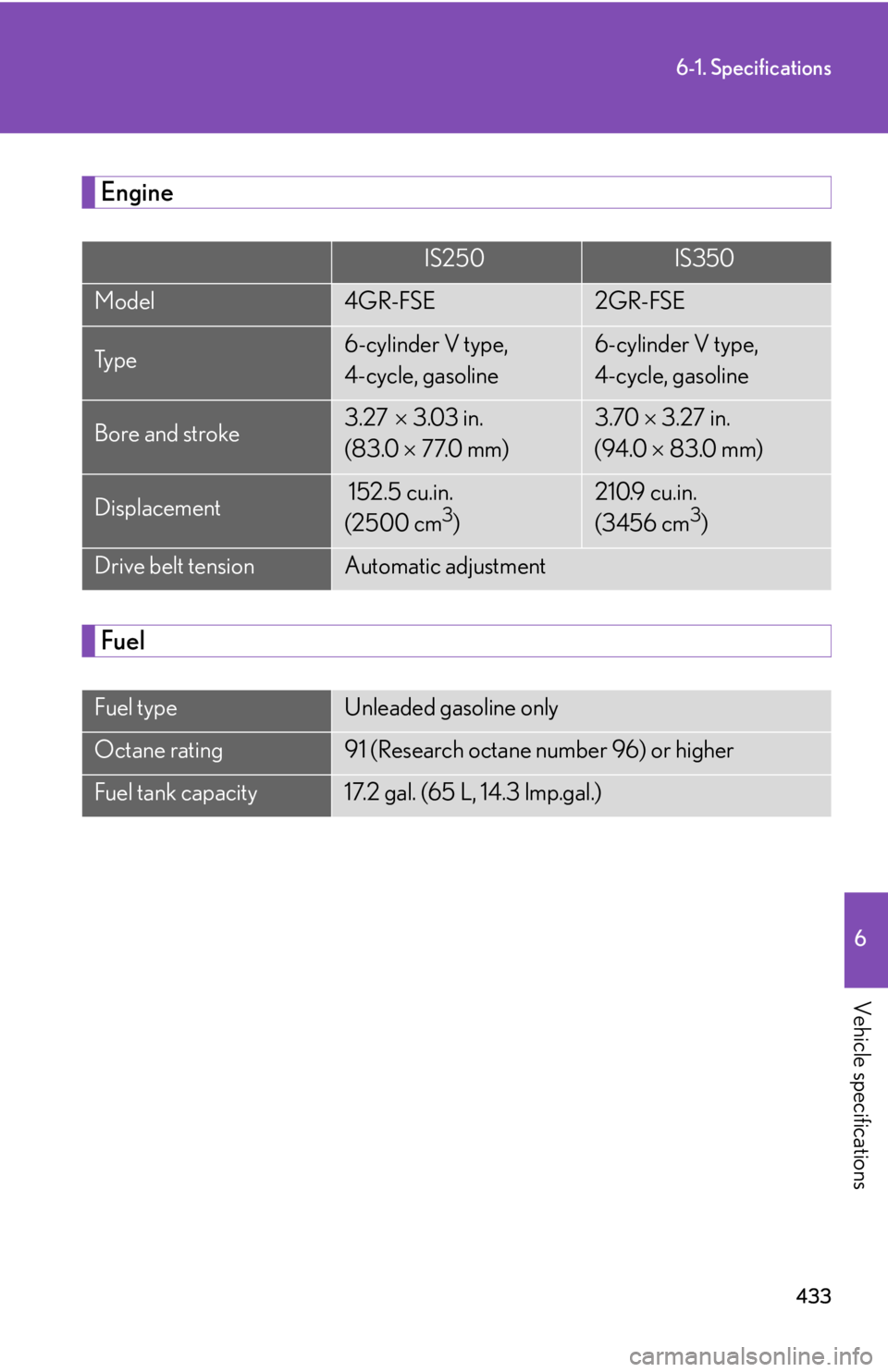LEXUS IS250 2016 Owners Manual
IS250 2016
LEXUS
LEXUS
https://www.carmanualsonline.info/img/36/58921/w960_58921-0.png
LEXUS IS250 2016 Owners Manual
Trending: clutch, AUX, coolant, key, weight, open gas tank, odometer
Page 421 of 542
424
5-2. Steps to take in an emergency
If your vehicle overheats
If your engine overheats:
Stop the vehicle in a safe place and turn off the automatic air
conditioning system.
Check to see if steam is coming out from under the hood.
If you see steam:
Stop the engine. Carefully lift the hood after the steam sub-
sides and then restart the engine.
If you do not see steam:
Leave the engine running and carefully lift the hood.
Remove the engine compartment cover. (�→P. 312)
Check to see if the cooling fan is operating.
If the fan is operating:
Wait until the temperature of the engine (shown on the
instrument cluster) begins to fall and then stop the engine.
If the fan is not operating:
Stop the engine immediately and call your local Lexus
dealer.
After the engine has cooled
down sufficiently, check the
engine coolant level and inspect
the radiator core (radiator) for
any leaks.
STEP1
STEP2
STEP3
STEP4
STEP5
Page 422 of 542
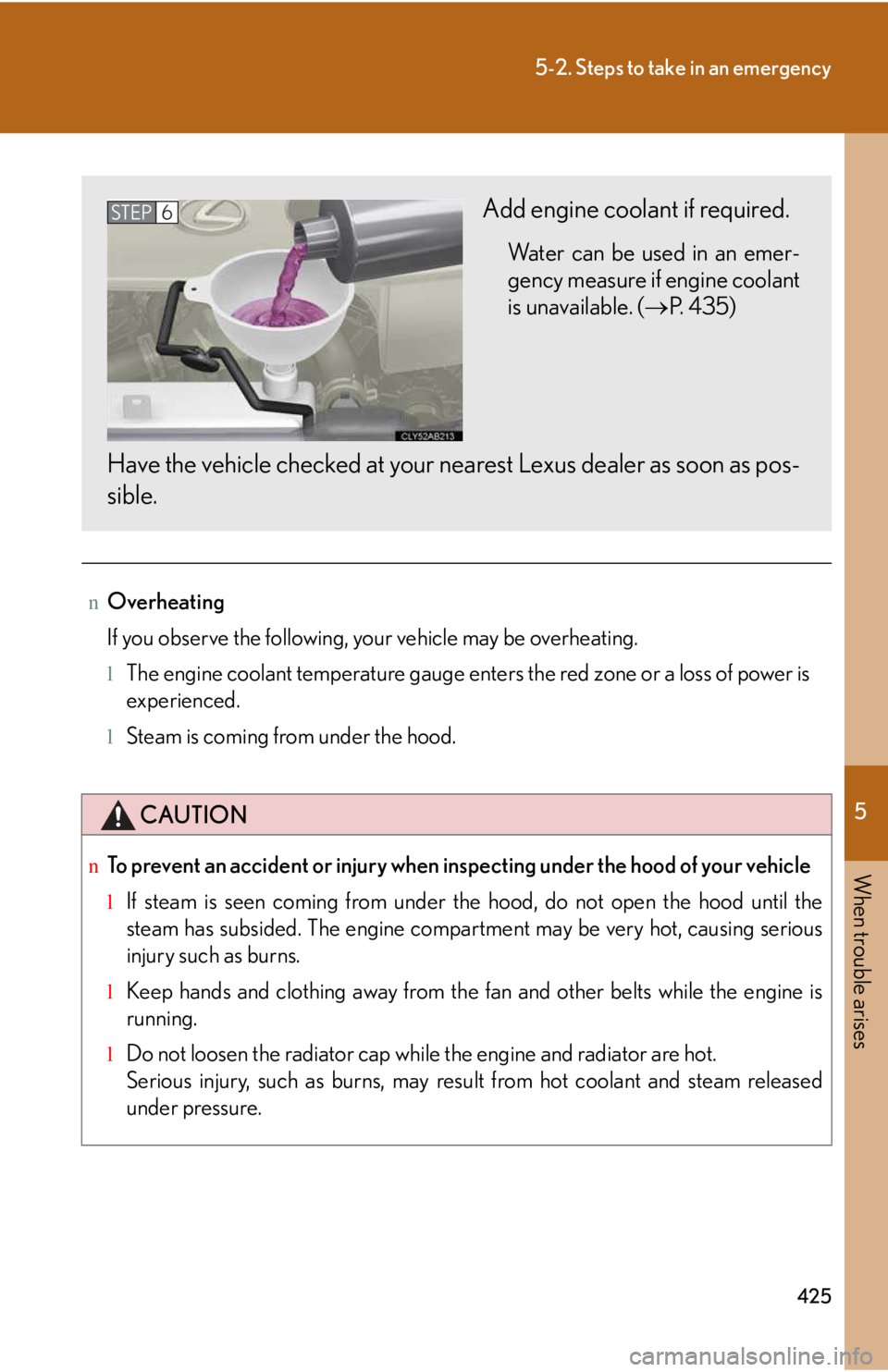
5
When trouble arises
425
5-2. Steps to take in an emergency
nOverheating
If you observe the following, your vehicle may be overheating.
lThe engine coolant temperature gauge enters the red zone or a loss of power is
experienced.
lSteam is coming from under the hood.
CAUTION
nTo prevent an accident or injury when inspecting under the hood of your vehicle
lIf steam is seen coming from under the hood, do not open the hood until the
steam has subsided. The engine compartment may be very hot, causing serious
injury such as burns.
lKeep hands and clothing away from the fan and other belts while the engine is
running.
lDo not loosen the radiator cap while the engine and radiator are hot.
Serious injury, such as burns, may result from hot coolant and steam released
under pressure.
Add engine coolant if required.
Water can be used in an emer-
gency measure if engine coolant
is unavailable. (�→P. 4 3 5 )
Have the vehicle checked at your nearest Lexus dealer as soon as pos-
sible.
STEP6
Page 423 of 542
426
5-2. Steps to take in an emergency
NOTICE
nWhen adding engine coolant
Wait until the engine has cooled down before adding engine coolant.
When adding coolant, do so slowly. Adding cool coolant to a hot engine too quickly
can cause damage to the engine.
Page 424 of 542
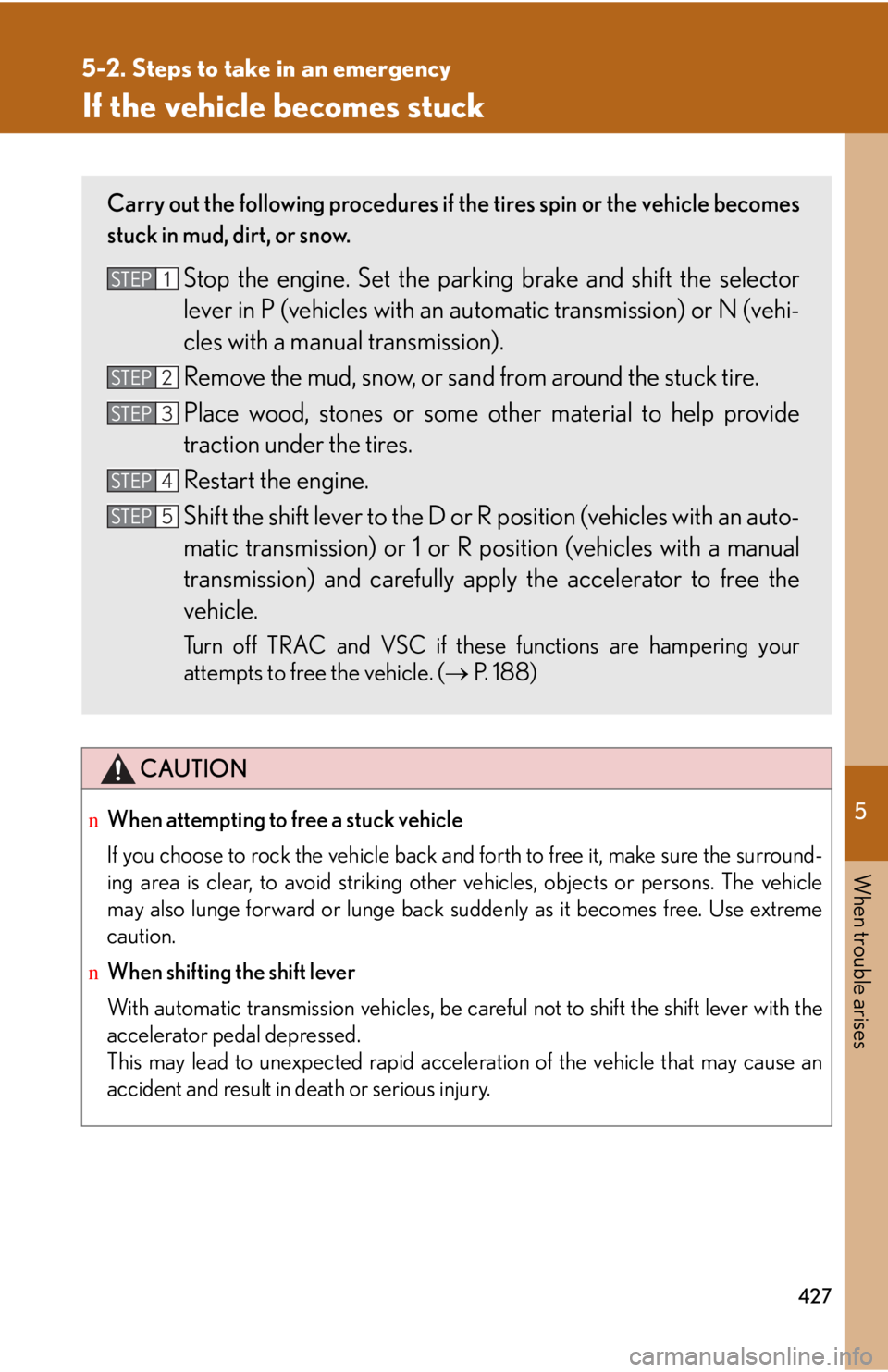
5
When trouble arises
427
5-2. Steps to take in an emergency
If the vehicle becomes stuck
CAUTION
nWhen attempting to free a stuck vehicle
If you choose to rock the vehicle back and forth to free it, make sure the surround-
ing area is clear, to avoid striking other vehicles, objects or persons. The vehicle
may also lunge forward or lunge back suddenly as it becomes free. Use extreme
caution.
nWhen shifting the shift lever
With automatic transmission vehicles, be careful not to shift the shift lever with the
accelerator pedal depressed.
This may lead to unexpected rapid acceleration of the vehicle that may cause an
accident and result in death or serious injury.
Carry out the following procedures if the tires spin or the vehicle becomes
stuck in mud, dirt, or snow.
Stop the engine. Set the parking brake and shift the selector
lever in P (vehicles with an automatic transmission) or N (vehi-
cles with a manual transmission).
Remove the mud, snow, or sand from around the stuck tire.
Place wood, stones or some other material to help provide
traction under the tires.
Restart the engine.
Shift the shift lever to the D or R position (vehicles with an auto-
matic transmission) or 1 or R position (vehicles with a manual
transmission) and carefully apply the accelerator to free the
vehicle.
Turn off TRAC and VSC if these functions are hampering your
attempts to free the vehicle. (�→ P. 1 8 8 )
STEP1
STEP2
STEP3
STEP4
STEP5
Page 425 of 542
428
5-2. Steps to take in an emergency
NOTICE
nTo avoid damaging the transmission and other components
lAvoid spinning the wheels and do not rev the engine.
lIf the vehicle remains stuck after trying these procedures, the vehicle may require
towing to be freed.
Page 426 of 542
430
6-1. Specifications
Maintenance data (fuel, oil level, etc.)
Dimensions and weight
*1: Unladen vehicle
*2: Vehicle with 18 inch disk wheels
*3: Vehicle with tires other than the above on rear wheels
Overall length180.3 in. (4580 mm)
Overall width70.9 in. (1800 mm)
Overall height *1
2WD
models56.1 in. (1425 mm)
AW D
models56.7 in. (1440 mm)
Wheelbase107.4 in. (2730 mm)
Tr e a d
Front60.4 in. (1535 mm)
Rear60.0 in. (1525 mm)*2
60.4 in. (1535 mm)*3
Vehicle capacity weight
(Occupants + luggage)825 lb. (375 kg)
Page 427 of 542
431
6-1. Specifications
6
Vehicle specifications
Vehicle identification
nVehicle identification number
The vehicle identification number (VIN) is the legal identifier for your
vehicle. This is the primary identification number for your Lexus. It is used
in registering the ownership of your vehicle.
This number is stamped on the top left of the instrument panel and in the
engine compartment.
This number is also on the Certifi-
cation Label.
Page 428 of 542
432
6-1. Specifications
nEngine number
The engine number is stamped on the engine block as shown.
Page 429 of 542
433
6-1. Specifications
6
Vehicle specifications
Engine
Fuel
IS250IS350
Model4GR-FSE2GR-FSE
Ty p e6-cylinder V type,
4-cycle, gasoline
6-cylinder V type,
4-cycle, gasoline
Bore and stroke3.27� �× 3.03 in.
(83.0 �× 77.0 mm)
3.70 �× 3.27 in.
(94.0 �× 83.0 mm)
Displacement 152.5 cu.in.
(2500 cm3)
210.9 cu.in.
(3456 cm3)
Drive belt tensionAutomatic adjustment
Fuel typeUnleaded gasoline only
Octane rating91 (Research octane number 96) or higher
Fuel tank capacity17.2 gal. (65 L, 14.3 lmp.gal.)
Page 430 of 542
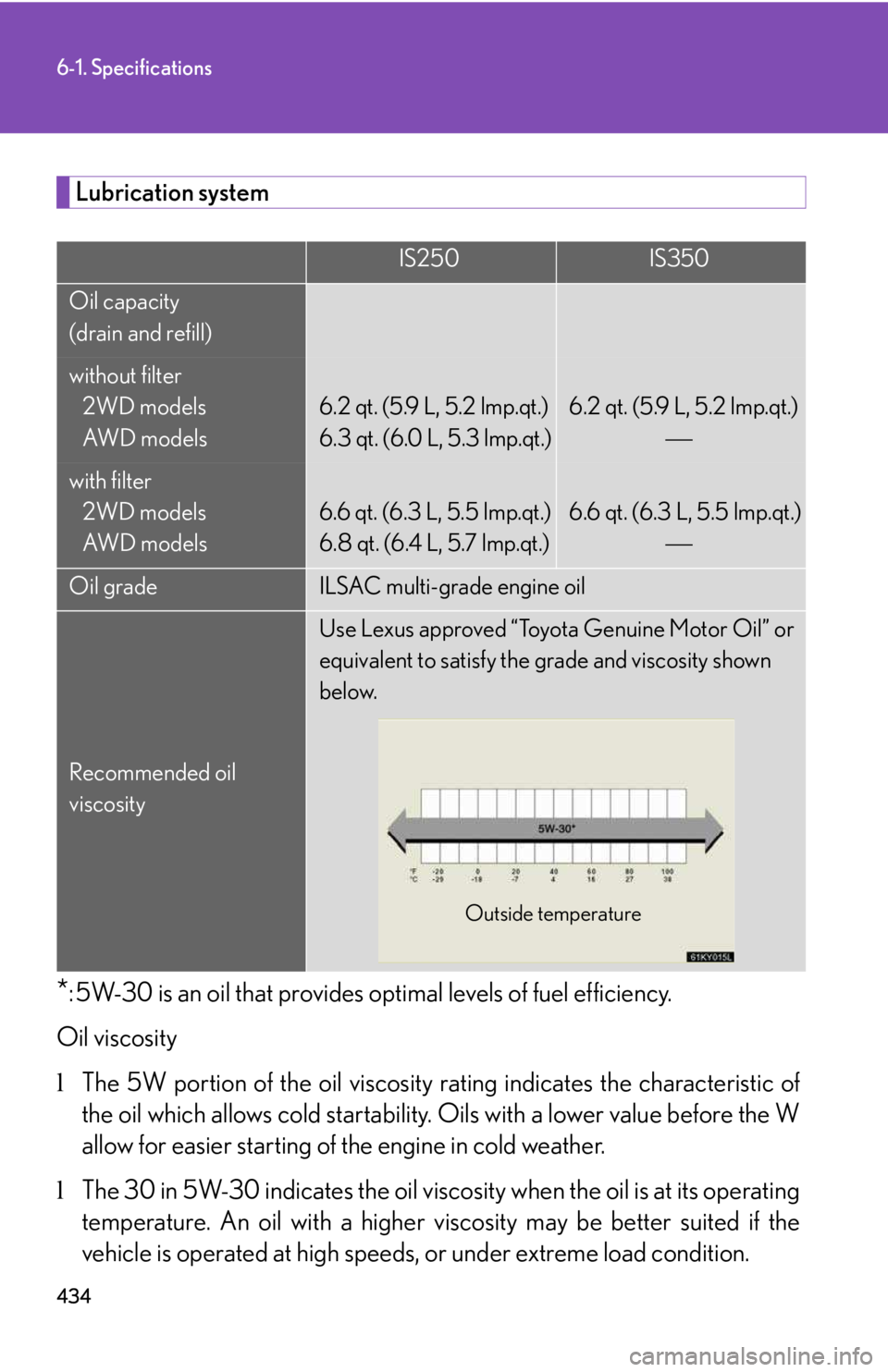
434
6-1. Specifications
Lubrication system
*: 5W-30 is an oil that provides optimal levels of fuel efficiency.
Oil viscosity
lThe 5W portion of the oil viscosity rating indicates the characteristic of
the oil which allows cold startability. Oils with a lower value before the W
allow for easier starting of the engine in cold weather.
lThe 30 in 5W-30 indicates the oil viscosity when the oil is at its operating
temperature. An oil with a higher viscosity may be better suited if the
vehicle is operated at high speeds, or under extreme load condition.
IS250IS350
Oil capacity
(drain and refill)
without filter
2WD models
AWD models
6.2 qt. (5.9 L, 5.2 lmp.qt.)
6.3 qt. (6.0 L, 5.3 lmp.qt.)
6.2 qt. (5.9 L, 5.2 lmp.qt.)
�⎯
with filter
2WD models
AWD models
6.6 qt. (6.3 L, 5.5 lmp.qt.)
6.8 qt. (6.4 L, 5.7 lmp.qt.)
6.6 qt. (6.3 L, 5.5 lmp.qt.)
�⎯
Oil gradeILSAC multi-grade engine oil
Recommended oil
viscosity
Use Lexus approved “Toyota Genuine Motor Oil” or
equivalent to satisfy the grade and viscosity shown
below.
Outside temperature
Trending: air condition, OBD port, airbag, fold seats, engine, driver seat adjustment, sat nav
